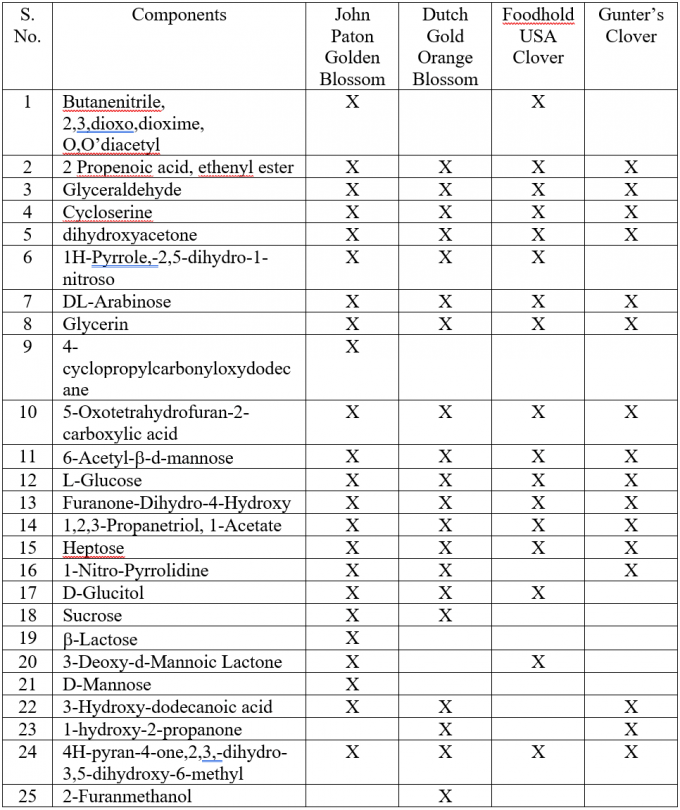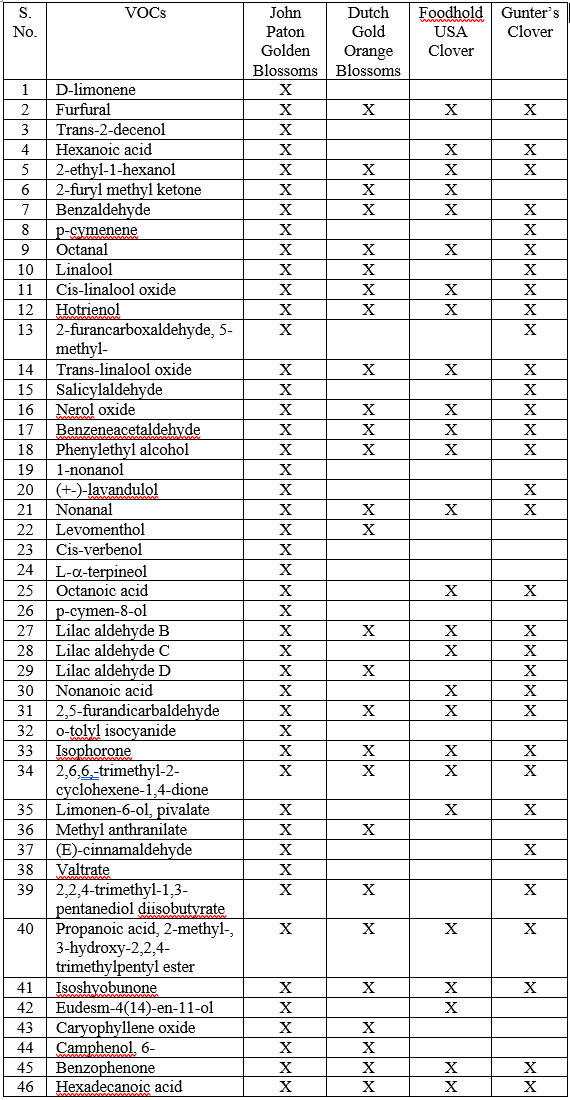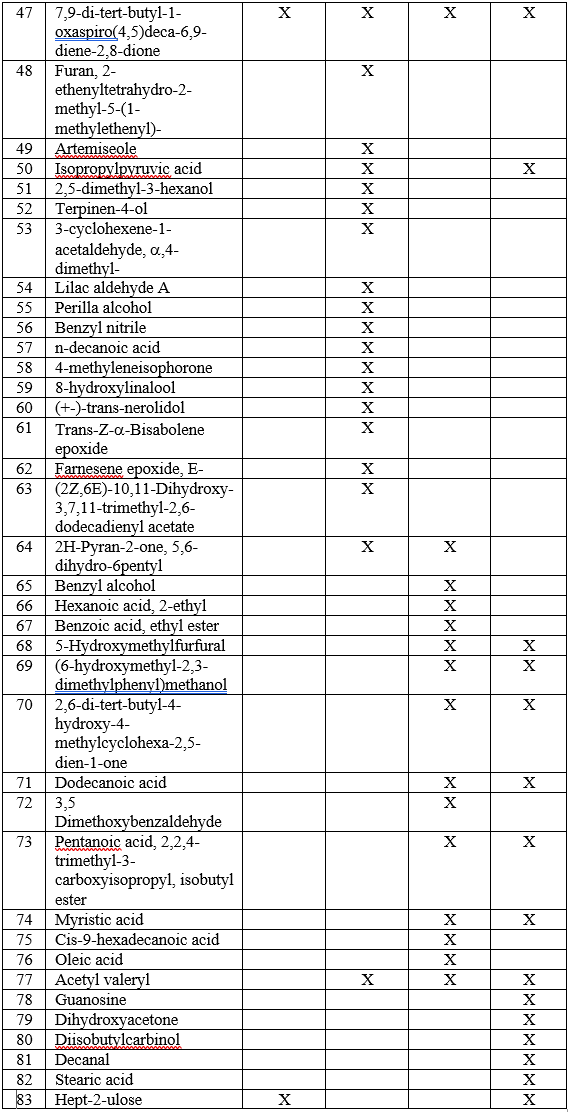The analysis of honey samples using different sample preparation techniques demonstrates the ability of GC-MS to analyze complex mixtures of organic compounds including the removal and identification of the volatile species in such mixtures.
In GC-MS analyses, sample preparation is a critical step in accurate qualitative and quantitative measurements. Four different honey samples were analyzed in this example. Honey is a complex product as its composition is affected by several factors such as bee species, nectar from the plant species, geographical area, harvesting season, and storage conditions. Compounds present in the honey samples were extracted using two different techniques – (i) solvent extraction and (ii) headspace solid phase microextraction (HS-SPME).
Solvent extraction: Honey samples were extracted using dichloromethane in a separating funnel. 1 ml of the extract was injected into the GC.
HS-SPME: The volatile organic compounds present in four honey samples were extracted using the headspace SPME method. 65 mm PDMS/DVB, stableflex fiber assembly was used to adsorb the volatiles. In a typical analysis, 3g of the sample was put into a 15 ml vial. The vial was sealed with a cap having a PTFE/silicone septa. The vial was conditioned at 50oC for 30 min prior to headspace SPME sampling. Then the SPME syringe was introduced through the septum and exposed to the sample with a headspace for 30 minutes, followed by desorption in the GC inlet at 250 oC.
Table 1 shows the compounds found in the four different honey samples analyzed using the solvent extraction technique. 25 different compounds were found among the four honey samples with the majority of them being carbohydrates (sugars) such as L-Glucose, DL-Arabinose, Sucrose, b-Lactose, D-Mannose. Other compounds including alcohol, aldehydes, ketones, acids, and furan compounds were also present in the honey. Table 2 shows the volatile organic compounds extracted from different honey samples. A total of 83 volatile organic compounds were found among the four honey samples which include alcohols, aldehydes, ketones, esters, terpenes, furans and lactones. These VOCs include the floral markers which provide distinct aromas to the honey. Among the compounds found, methyl anthranilate is a floral marker of citrus honey and it was found only in the golden blossom and orange blossom honeys. Compounds like linalool oxide, lilac aldehydes are also known to be floral markers of citrus honey. Nonanal, phenethyl alcohol, benzaldehyde, hotrienol, linalool, isophorone, benzyl alcohol, nonanol, hexadecenoic acid, hexanoic acid, 2-ethyl hexanoic acid, cinnamaldehyde are floral markers for varieties of honey sources such as heather, honeydew, cotton, cashew, lavender and rhododendron.
Thus, using this technique any unknown sample can be analyzed to find the chemical compounds including the VOCs present in it. The enhanced high sensitivity sample identification with compatibility for a wide range of samples, means GC-MS is usefully applied to food, fragrance, drug and medicine, environmental, chemical testing, forensics, and polymer sciences.




